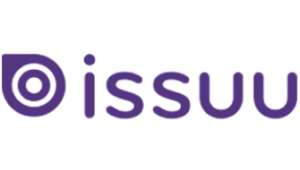Most of us are addicted to Facebook and don’t want to leave the app once we’re in it, thanks to its brilliant UX. This can pose an issue for advertisers who are trying to collect leads.
Thankfully, Facebook created “lead ads” to solve that problem! Lead ads allow advertisers to collect information from prospects within the Facebook platform, instead of sending them to a landing page. If well executed, lead ads are a cost-effective and ROI-focused strategy to generate more potential leads.
We test Facebook lead ads on a regular basis, and here are 10 findings that, on average, measurably improve results.
Table of Contents
Toggle1. Include offers.
People are much more likely to share personal information if they feel they are receiving something of equal or more value in return. Make sure your lead ads are offering something valuable that the audience can really benefit from.
Think that’s obvious? We tested 1,500 lead ads specifically to find out how ads with offers compare to ads without offers, and it turns out that ads with offers performed better 67% of the time.
2. Keep the text before the forms short.
Sometimes it’s beneficial to cram in as much text as possible. With lead ads, however, it’s the other way around. Keep the text to a minimum!
People make instant decisions about whether or not they want to sign up for what you are offering. Using minimal text forces you to get to the point and allows people to get to the form fields more quickly.
Pro Tip: Warn users about the pop-up form.
The new forms do not send users to a new page; they send users to a pre-filled pop up form. It can be really jarring and confusing for users who have never seen it before. Give them a heads up so they won’t be surprised!
Simply add a little warning like “After you click, you’ll be sent to a form with your info pre-filled” or “Facebook will fill in the form, so you just have to hit the submit button.”
3. Be cognizant of the relationship between form fields and quality.
Do you want more leads? Or better leads?
- With more fields in a form, fewer people will complete the form, but the ones who do will be higher quality.
- Fewer form fields result in more leads who are less qualified.
- If you have a solid marketing automation program ready to nurture and qualify leads, then you’ll be able to have the best of both worlds: more leads and higher quality.
If you are using lead ads for remarketing, we recommend keeping the number of fields to a minimum. People already know your brand by then, so there is no need to challenge their attention span by asking for more than absolutely necessary information.
Because the lead ad forms are pre-filled with most of the user’s information, having more form fields isn’t so much a problem of effort, but one of trust. Asking for an email AND a phone number can reduce your conversions dramatically.
Only ask for the information you need, and let your marketing automation program capture more lead intelligence over time. Having an ad with pre-filled fields does not automatically mean that users will give it over.
4. Monitor comments.
Lead ads can be liked, shared and commented on just like any other Facebook ad. Facebook users expect customer service to be extremely responsive, which means that ad engagement needs to be monitored and managed. Respond to comments, and don’t forget to stay true to your brand while doing so! Try using the smiley icon to add a sticker, or attach a photo.
5. Test annotated images.
Annotated images are simply images with text on them. It is a best practice to test images with text to reiterate an offer. Frequently, people scroll through their Facebook home page looking at images and not at the text that accompanies each post. Combine a nice image with catchy text, and test whether those ads generate more engagement.

6. Stress the call-to-action.
In 99% of advertising formats, including lead ads, a call-to-action really helps.
It’s not always enough to keep the text of the lead ad short if it doesn’t include the call-to-action. Remember, you want to say the most important things. What’s more important than to tell the customer to click that sign-up button? Since lead ads are relatively new, a call-to-action also helps set the right expectations. Sometimes people click on “sign up” but are actually surprised to find a form after they click because they are not familiar with lead ads. Including the call-to-action in the text dramatically reduces the drop-off rate at that point in the sales funnel.
7. Encourage people to take a secondary conversion action on your site after they submit the lead ad form.
Even though your goal is to capture the lead on Facebook, try to get the most out of what Facebook lead ads can do. After a person converts on the lead ad, Facebook displays a link to your website. Usually, people are much more likely to convert on a website after they already shared some of their personal information, so don’t be afraid to ask them to convert again by presenting a secondary offer for providing more info. They already agreed once on Facebook, so they might be more willing to give you the info you didn’t ask for on Facebook in order to keep the lead ad form short.
8. Automatically integrate the leads with your funnel.
With Facebook lead ads, you may get an overwhelming influx of leads. Your sales team may not be able to properly handle all of them, and many of the leads won’t be ready to talk to sales anyway. Lead nurturing campaigns will automatically find the gold nuggets while you’re mining away. When we integrate Facebook lead ads into our clients’ HubSpot portals, for example, we are able to automatically follow up with those leads and send them to sales when they are ready.
Facebook lead ads integrate with many CRM and marketing automation systems, which is great news if you are trying to automate parts of your business. Examples of systems that can be integrated include:
- HubSpot
- Marketo
- Active Campaign
- Salesforce
Zapier allows integration into many more. If you are using any of the tools above, Facebook will be able to insert the new lead in your database so your team can take it from there.
Pro Tip: Clean up your contact list.
It’s possible to get a LOT of leads from lead ads, but as we said before, generating a huge quantity of leads runs the risk of losing quality.
Running a good list-cleaning campaign that automatically deletes contacts with bounced or bad emails every few months will help increase the quality of your CRM and automation program.
9. Follow up on leads instantly.
Potential clients are likely to compare different products and services. Make your mark right away by following up on leads as soon as they come in. Waiting too long before delivering what was promised dramatically reduces your chances to convert the lead into a sale.
We have had clients collect THOUSANDS of leads from Facebook lead ads. When you start gaining leads in huge volume, you’ll need an automation program and CRM setup that will help you properly welcome the new leads.
One way or another, you need to be in touch with EACH lead within 48 hours whether by email or phone depending on what they signed up for.
10. Keep testing ads to reduce the CPL.
The lower the CPL (cost per lead), the better. Strategic A/B (aka split) testing of images, texts, headlines and other elements of the ad can significantly reduce the CPL. Best practice is to test four to five ads at a time. The trick is to only test one element at a time, leaving the rest of the ad identical to the other ads that are being split-tested, thereby isolating your variables. So if you are testing images, the ads should have identical copy, and so on.
We have also found that using lookalike audiences drastically reduces the CPL and brings in a much more qualified lead!
Let’s Talk
Have you tried Facebook lead ads and found success? If you’d like some help with your paid search and paid social campaigns, contact us for a no-obligation strategy session with our founder.
{{cta(‘e891ef03-b70a-452c-85c1-9d20ae691f36’)}}








